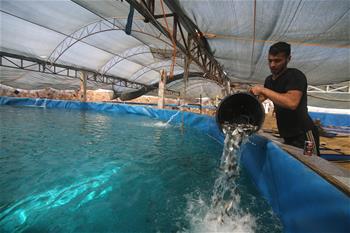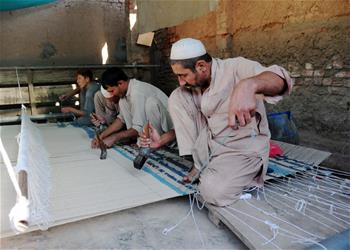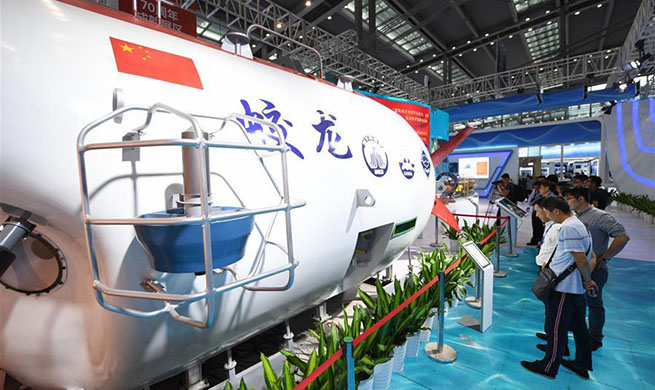CHICAGO, Oct. 15 (Xinhua) -- An innovative patch could bring the assessment of human joints into the 21st century, according to a news release posted on the website of the University of Michigan (UM) on Tuesday.
Inspired by kirigami, a Japanese art of creating 3D structures from cut paper, researchers at UM cut a thin sheet of plastic into a labyrinth of concentric ovals, a shape that pulls apart almost like a Slinky, and the cuts open into a lacework over the shoulder.
They then equipped the kirigami patch with two strain gauges: one along the corner of the shoulder to capture the raising and lowering of the arm, and the other at the back of the shoulder to measure cross-body movements.
The researchers cross-referenced the data from the kirigami sensor with arm motions captured by a camera motion tracking system that uses reflective markers to track the angular positions of the arm and reconstructs them in a computer simulation.
The researchers envision that this kind of inexpensive sensor could be given to physical therapy patients, enabling them to log exercises and see progress through a smartphone app. This could help keep patients honest about doing their exercises and also provide more detailed information to therapists about each patient's progress.
"Since you can tune the cut design to match the curvatures of all different parts of your body, you can generate a lot of data that can be used to track your form, for instance while lifting, as well as the amount of strain applied on your joints," said Erin Evke, a doctoral student in materials science and engineering at UM. "The user could be alerted of improper form in real-time and therefore prevent injuries."
Recent work suggests that tears in the anterior cruciate ligament, a serious knee injury experienced by many athletes, occur as a result of cumulative stresses rather than a single excessive force. Similar issues occur with the shoulder joint. Inexpensive sensors could measure stresses so that athletes and trainers could recognize evolving problems and head off major injuries, Max Shtein, a professor of materials science and engineering at UM, pointed out.
The study has been published in the journal Advanced Materials Technologies.

















